
Introduction
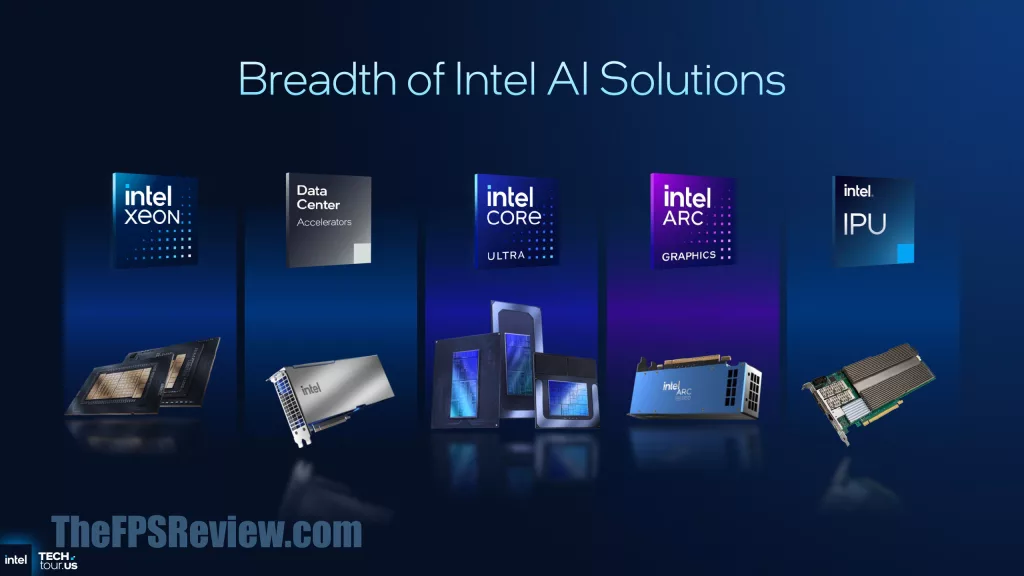
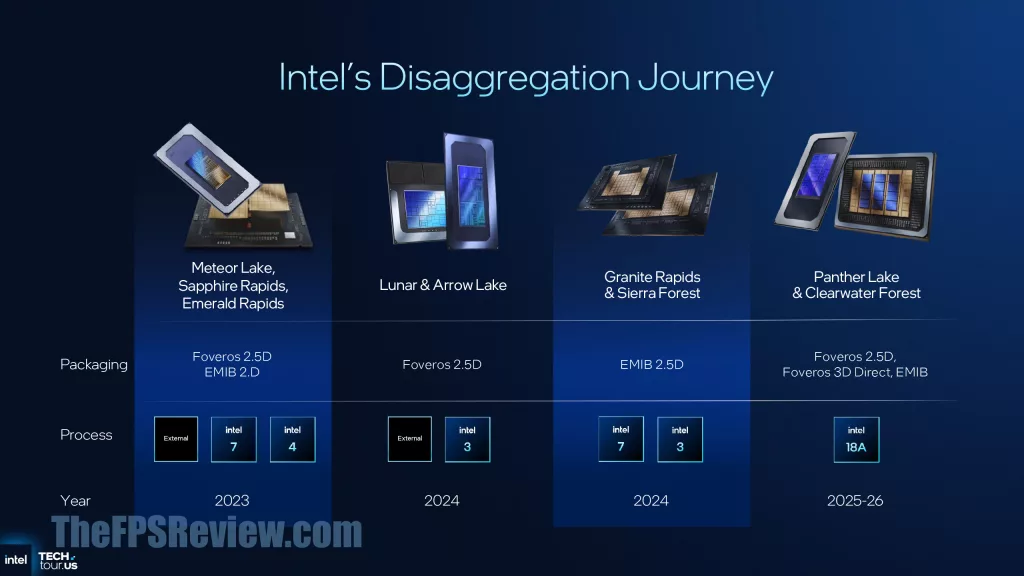
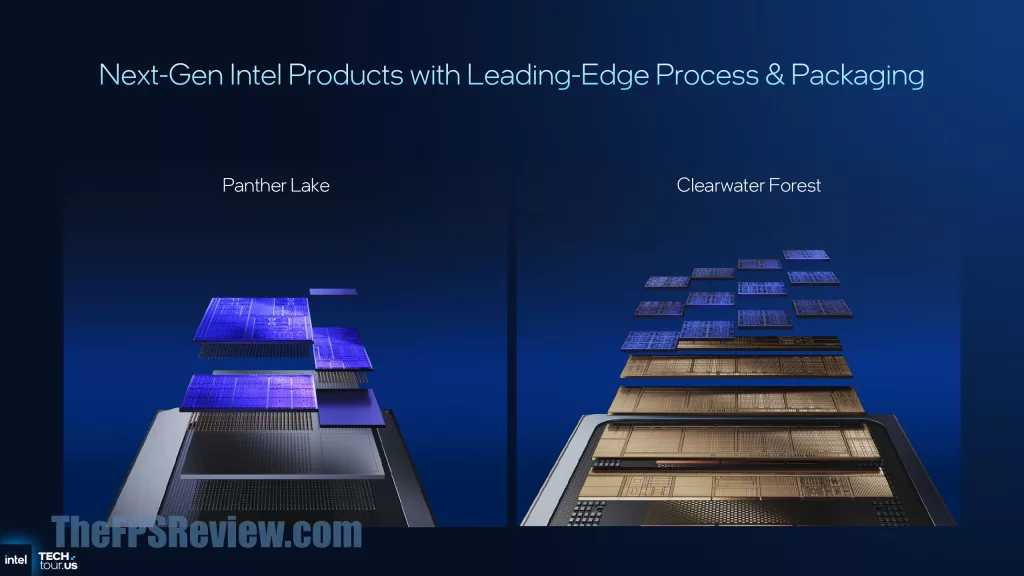
Intel’s next-generation mobile processor has been announced, and in this introductory article, we will provide a high-level overview of what to expect in 2026 from Intel. In October, Intel let loose all the juicy details on its next-generation mobile platform and data center platform as well, by providing press information at its Arizona Tech Tour 2025. The processor known as Panther Lake has been revealed, as well as the datacenter-focused Clearwater Forest. The key point in these new technologies is the use of Intel’s 18A manufacturing process, which allows scalability in the platform, with more choices in configurations as well.
While we typically associate these processors as “SOCs” (System On a Chip), Intel is redefining SOC to a new definition that Intel has been heralding, which it likes to call a “System of Chips.” Intel Panther Lake will supersede Intel Lunar Lake, which launched a year ago on Intel 3, in September of 2024, for mobile platforms. As we are a gaming-focused website, we’ll focus on Panther Lake today, and specifically the CPU Compute and GPU tile, or chiplet, within the package.
Panther Lake Models
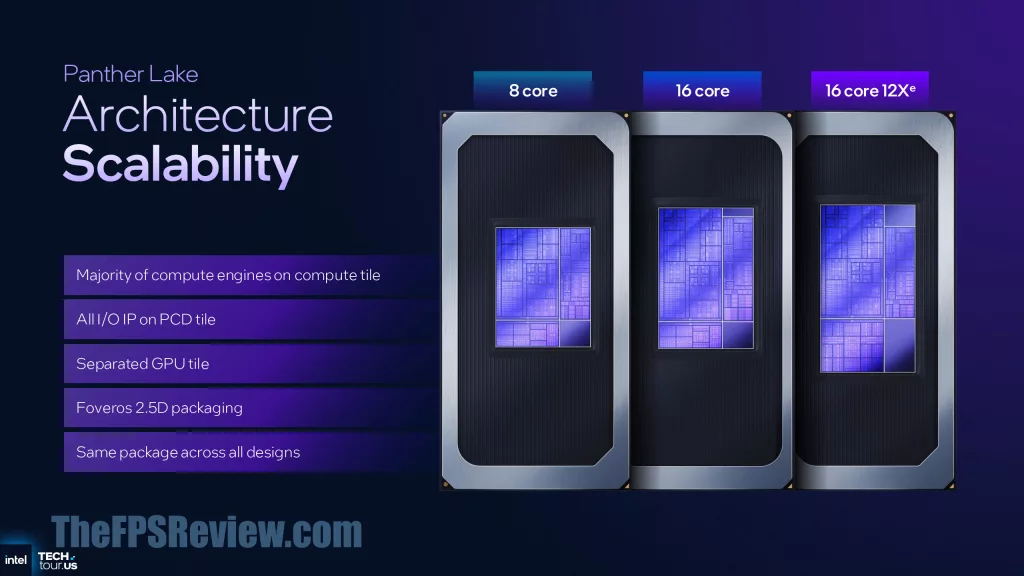
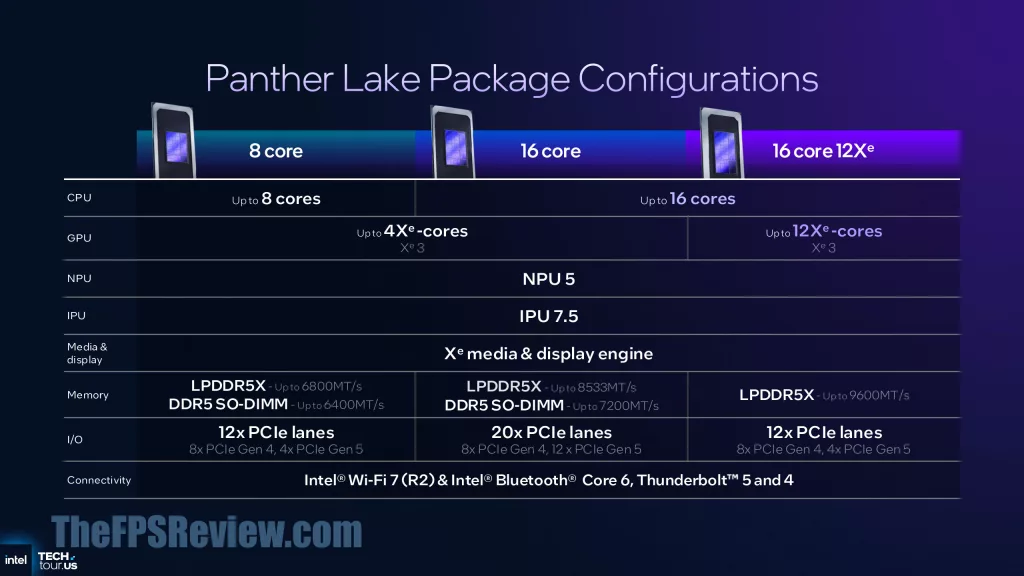
Before we dive into the specifics, let’s look at exactly what is being announced with Panther Lake. There are three distinct versions, models, SKUs of processors being announced. There is an 8-core processor with 4 Xe3 GPU cores, a 16-core processor with 4 Xe3 GPU cores, and a 16-core processor with 12 Xe3 GPU cores. These 8-core and 16-core CPUs are made up of a combination of P-Cores, E-Cores, and Low Power E-Cores, and we’ll break that down below. So yes, the P-Core / E-Core and Low Power E-Core dichotomy exists in this generation.
On the memory side, this time the memory is not soldered to the package. Intel Panther Lake can support LPDDR5X and DDR5 SO-DIMMs, giving mobile manufacturers options for configurations. The 8-core Panther Lake configuration supports up to LPDDR5X 6800MT/s or up to DDR5 6400MT/s. The 16-core Panther Lake configuration supports up to LPDDR5X 8533MT/s or up to DDR5 7200MT/s. The 16-core configuration with 12 Xe3 GPU cores supports up to LPDDR5X 9600MT/s for high bandwidth to graphics.
The I/O configuration is also different per package. The 8-core configuration has 12x PCIe lanes with 8x PCIe Gen4 and 4x PCIe Gen5. The 16-core configuration with 4 Xe3 GPU cores actually has the most PCIe lanes, with 20x PCIe lanes available. It is split with 8x PCIe Gen4 and up to 12x PCIe Gen5, giving it a lot of flexibility with I/O devices. The 16-core configuration with 12 Xe3 GPU cores matches the 8-core configuration with 12x PCIe lanes split of 8x PCIe Gen4 and 4x PCIe Gen5.
All configurations get the newer NPU 5 version, IPU 7.5 version, Xe media, and display engine. All configurations also receive Intel Wi-Fi 7 (R2) and Intel Bluetooth Core 6 and Thunderbolt 5 and 4.
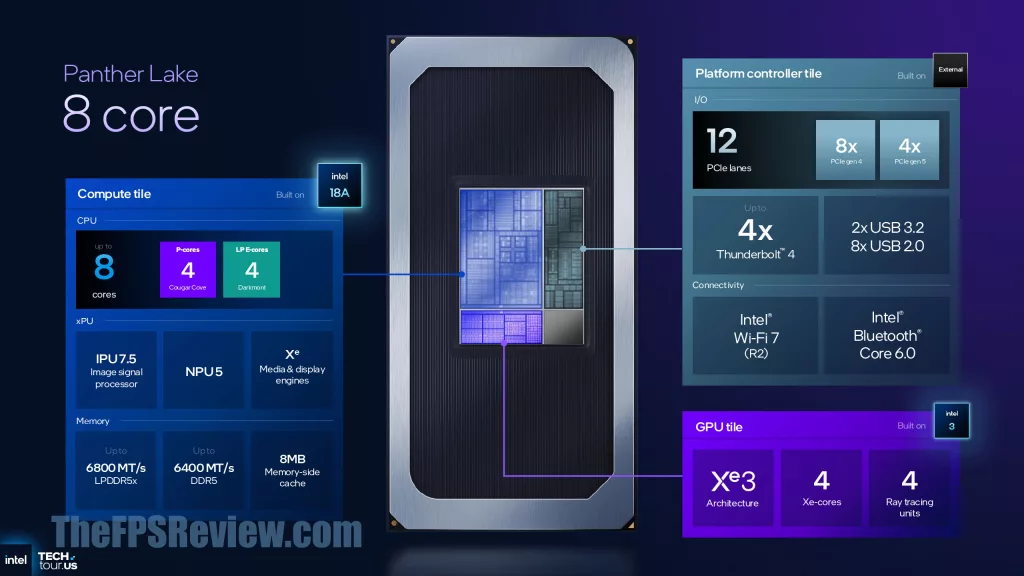
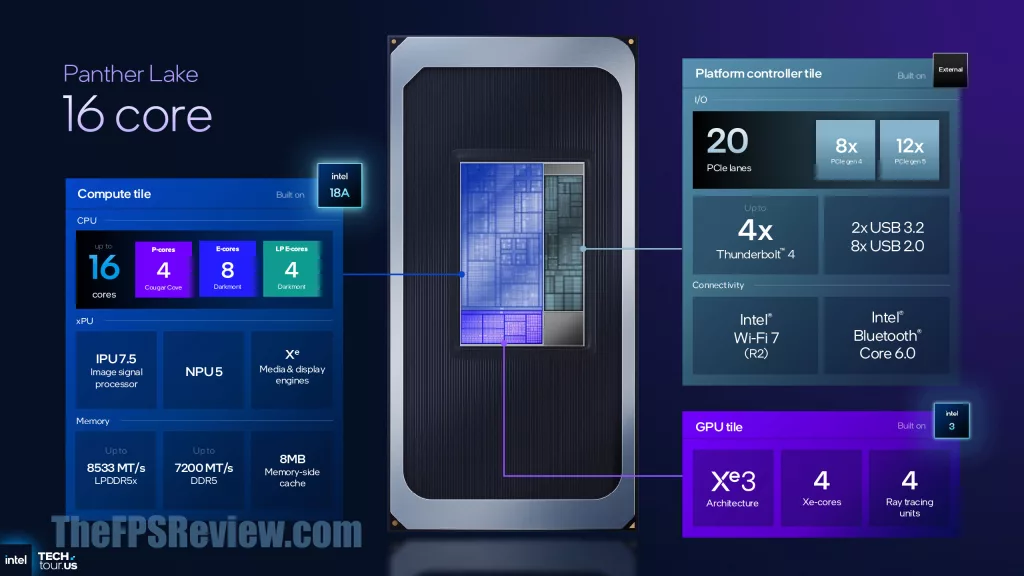
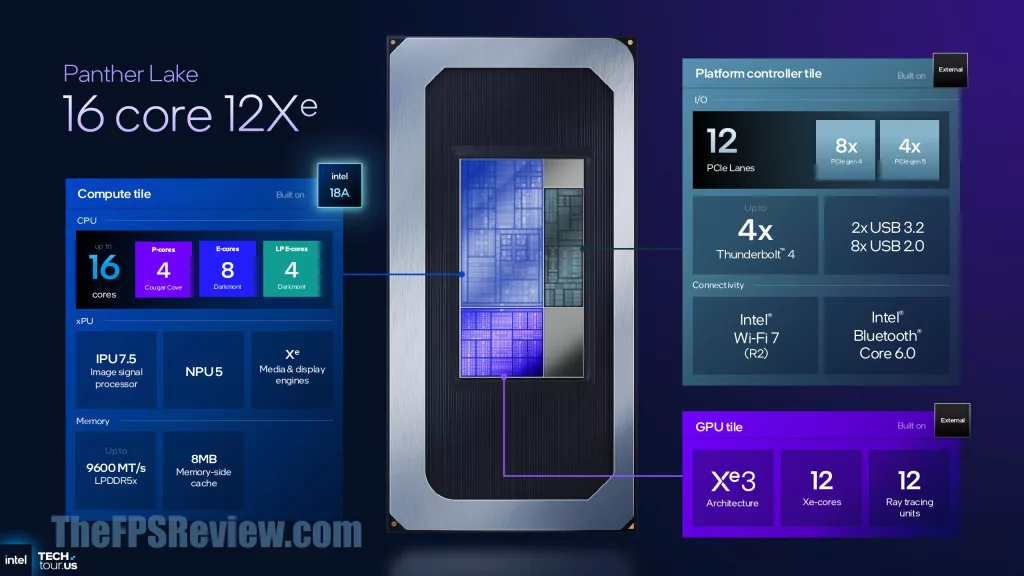
Now, let’s look closer at the configurations and how the CPU cores are configured. In the base model, with 8 cores, you’ll find this is actually made up of 4x P-Cores and 4x LP E-Cores, with LP standing for Low Power, so these are Low Power E-Cores. Intel is simply adding the numbers together to call this an “8-core” CPU, which is technically correct, but only four of those cores are P-Cores. This configuration also has 4 Xe3 GPU cores on the GPU tile. The Platform controller tile has 12 PCIe lanes, and 2x USB 3.2 and 8x USB 2.0. Memory support is as indicated above, and there is an 8MB memory-side cache on the Compute tile.
The second configuration available is the 16-core model. This one extends the Compute tile to have 4x P-Cores, 8x E-Cores, and 4x LP E-Cores. Therefore, the 16-core configuration gets the normal power E-Cores, whereas the base configuration does not have them. However, it still only has 4x P-Cores; Intel is again adding the numbers to say it is a “16-core” CPU, which technically it is, but most of that is E-Cores. This configuration uses the same GPU tile, which has the same 4x Xe3 GPU cores. However, the Platform controller tile grows to 20x PCIe lanes, but the same USB support. Memory specifications are, however, upgraded, giving you better bandwidth.
Finally, the third configuration is a unique one, giving Intel an edge into a category it hasn’t had before, GPU-focused integrated graphics performance. The Compute tile is the same as the previous configuration with 4x P-Cores, 8x E-Cores, and 4x LP E-Cores. However, the GPU tile gets a big upgrade to 12x Xe3 GPU cores. The memory also gets an upgrade with up to 9600MT/s support, which will greatly affect integrated graphics performance for the better. The platform controller tile, however, matches that of the base model with 12x PCIe lanes.
